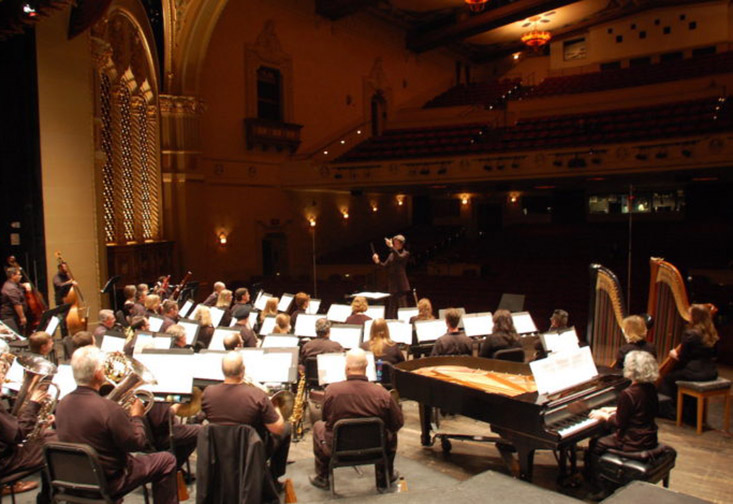Like any good German origin story, conductor Dr. Martin Seggelke’s career began with beer. One day, while Seggelke was playing in a community orchestra, the real conductor didn’t show up. Most of the band wanted to pack their instruments and pick up pint glasses at the local pub, but Seggelke, then just 14, was under the legal German drinking age. So he and his bandmates compromised.
“How about you conduct us?” they suggested, appeasing and no doubt provoking the young musician. After an hour of Seggelke conducting, the band was happily off for beer. Seggelke, meanwhile, had decided on what he wanted to do with his life.
“I was hooked,” he says. “I started taking conducting lessons right away.”
Since that fateful day, Seggelke has served under world-renowned conductors like Christoph Eschenbach, moved to the United States, earned a doctorate in conducting from the Eastman School of Music, founded the professional San Francisco Wind Symphony, and currently works as a music professor and administrator at the University of South Florida St. Petersburg, where he received the Award for Excellence in Teaching in 2018.
He’s released five albums of classical music, including his latest, 2018’s Bridges, which includes work from composers like Georgy Salnikov and Hugo Alfven. He was recently appointed as the assistant conductor of the Pinellas Park Civic Orchestra (PPCO). At the PPCO, he assists lead conductor Art Hansuld, a lover of showtunes, with the group’s classical and film music performances.

As his resume suggests, Seggelke is a committed conductor, no matter the composition, but his speciality is with classical works.
But it’s not always clear what conductors do. Are they orchestral foremen? Stately timekeepers? Indeed, Seggelke says, ask ten different conductors and you’re liable to get just as many different answers. For his part, Seggelke thinks of the conductor as a mediator, the outsourced ears of the ensemble that help its players hear the sounds beyond their own instruments.
“The role is really to be a helper and facilitator,” he says. “It is to mold the music and assist these talented players with creating a balanced blend of sounds.”
That role is, in many ways, similar to how Seggelke conducts his classroom. Just as his professional musicians devote hours to practicing and performing a given composition, his students have agreed to engage in the study of music.
“Every student in my classroom has already signed the invisible dotted line that says they want to learn,” he says. “It is a great privilege to teach them.”
Standing in front of a symphony orchestra, conductor’s baton in hand, Seggelke says he occupies three time zones simultaneously. His mind is in the past, listening back to sounds his musicians just made and trying to find imbalances and figure out how to fix them; he’s in the present moment, giving players gesture and cues for musical interpretation and expression; and he’s figuratively in the future, anticipating upcoming measures in the music. Although developed in the concert hall, Seggelke has adapted this technique to the classroom.
“This rather high-functioning approach to interacting with people translates into any possible classroom situation I have ever experienced,” he says. “It has made me a more efficient and more student-centered teacher.”
Seggelke’s heart is often with the iconic composers. He admires the “absolute brilliance” and “sublime architecture” of Bach’s compositions. He’s moved by Mahler and Wagner’s emotional command of music. But Seggelke is a longtime advocate for contemporary classical musicians. He takes pride in opportunities to premiere works from established composers like Martínez Gallego and young talents like Sean Hack.
Performed with the San Francisco Wind Symphony, Seggelke’s newest album Bridges, recorded over 2 days in June 2018, and released in December 2018, draws from his range of influences. It includes tracks in a variety of styles—from a rhythm-driven symphony to a contemporary meditation on the 9/11 attacks—by an international cast of composers.
“The album represents ‘bridges’ to all these different countries and composers from different heritages and musical languages,” Seggelke says. “We wanted to create a large variety so that somebody who does not like a certain kind of music would find at least one or two pieces that they like.”
Sometimes words fall short in describing art and music. Better to just take a listen above.
